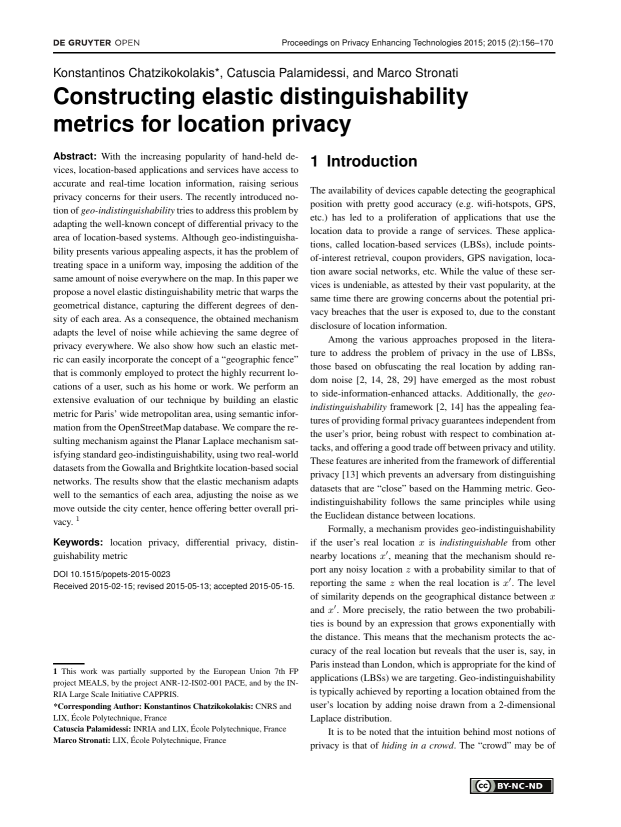Constructing elastic distinguishability metrics for location privacy
Authors: Konstantinos Chatzikokolakis (CNRS and LIX, École Polytechnique, France), Catuscia Palamidessi (INRIA and LIX, École Polytechnique, France), Marco Stronati (LIX, École Polytechnique, France)
Volume: 2015
Issue: 2
Pages: 156–170
DOI: https://doi.org/10.1515/popets-2015-0023
Abstract: With the increasing popularity of hand-held devices, location-based applications and services have access to accurate and real-time location information, raising serious privacy concerns for their users. The recently introduced notion of geo-indistinguishability tries to address this problem by adapting the well-known concept of differential privacy to the area of location-based systems. Although geo-indistinguishability presents various appealing aspects, it has the problem of treating space in a uniform way, imposing the addition of the same amount of noise everywhere on the map. In this paper we propose a novel elastic distinguishability metric that warps the geometrical distance, capturing the different degrees of density of each area. As a consequence, the obtained mechanism adapts the level of noise while achieving the same degree of privacy everywhere. We also show how such an elastic metric can easily incorporate the concept of a “geographic fence” that is commonly employed to protect the highly recurrent locations of a user, such as his home or work. We perform an extensive evaluation of our technique by building an elastic metric for Paris’ wide metropolitan area, using semantic information from the OpenStreetMap database. We compare the resulting mechanism against the Planar Laplace mechanism satisfying standard geo-indistinguishability, using two real-world datasets from the Gowalla and Brightkite location-based social networks. The results show that the elastic mechanism adapts well to the semantics of each area, adjusting the noise as we move outside the city center, hence offering better overall privacy. 1
Keywords: location privacy, differential privacy, distinguishability metric
Copyright in PoPETs articles are held by their authors. This article is published under a Creative Commons Attribution-NonCommercial-NoDerivs 3.0 license.

